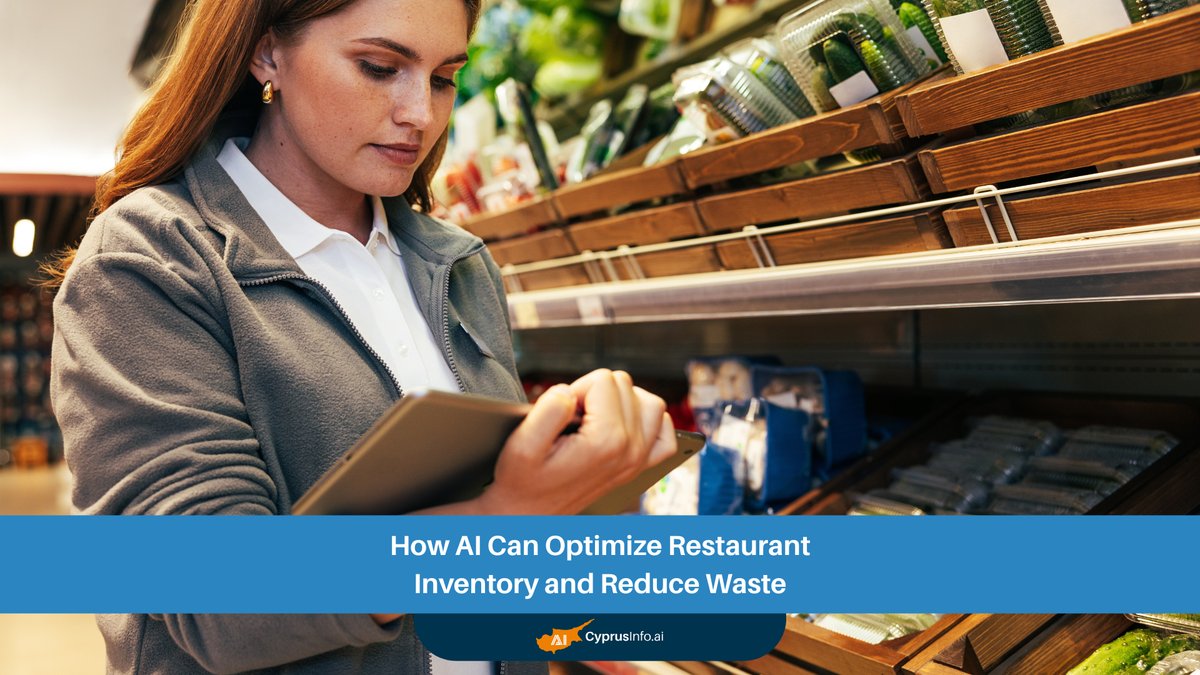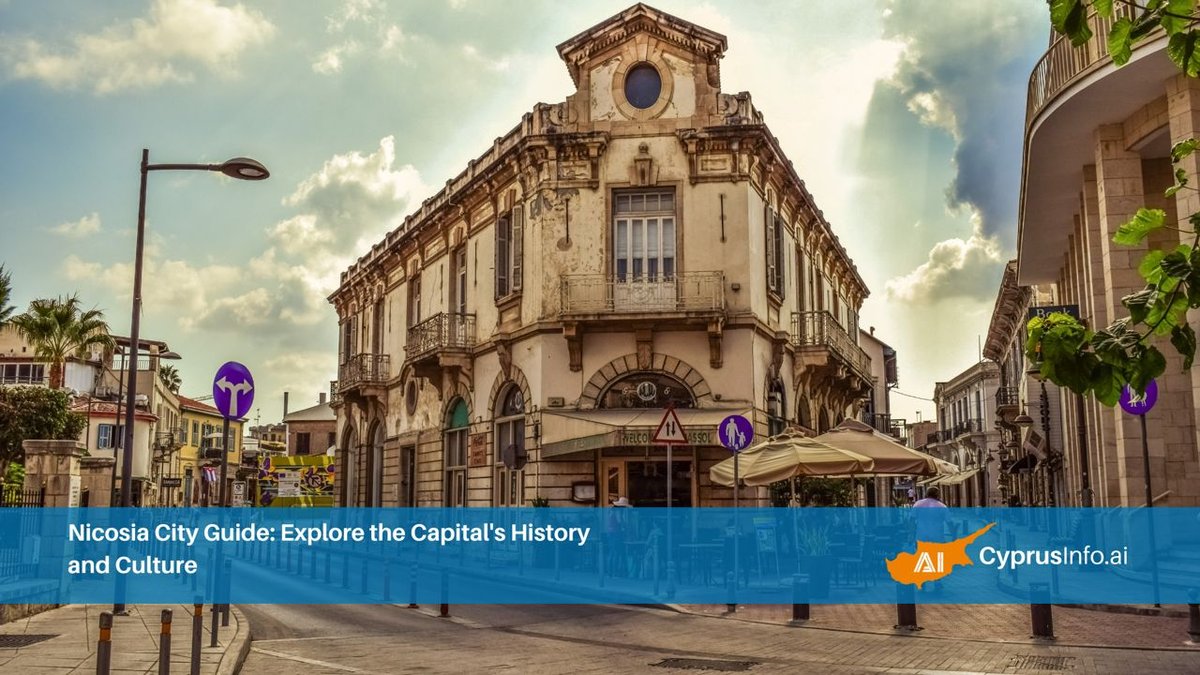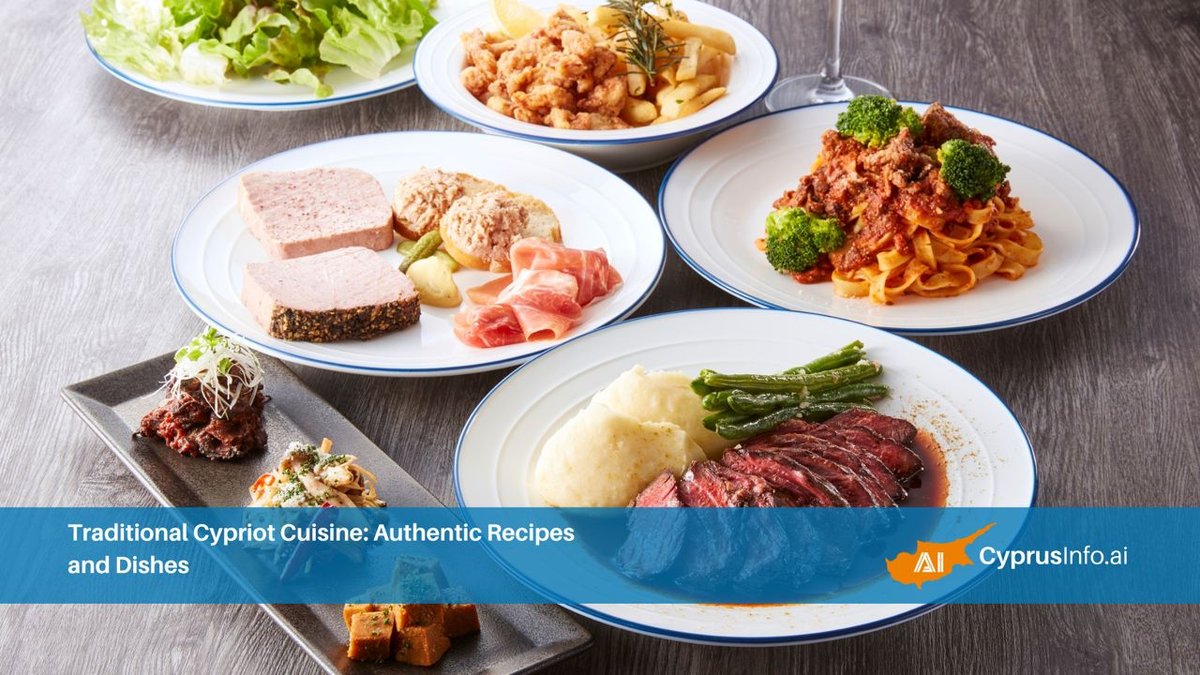In the bustling world of gastronomy, where margins are often razor-thin and competition fierce, efficient operations are not just a luxury but a necessity. One of the biggest challenges restaurants face globally is restaurant inventory management. Traditional methods often lead to significant food waste in restaurants, stockouts, over-ordering, and ultimately, a substantial drain on profitability. But what if there was a smarter way? Enter Artificial Intelligence. AI is no longer a futuristic concept; it's a powerful tool revolutionizing industries, and the culinary sector is no exception. By leveraging advanced algorithms and machine learning, AI Restaurant Inventory Management offers an unprecedented opportunity to streamline operations, slash waste, and significantly boost your bottom line.
This comprehensive guide delves deep into how AI can fundamentally transform how restaurants manage their stock, from predicting demand with remarkable accuracy to automating reordering and identifying waste patterns. We'll explore the tangible benefits, the implementation process, and how modern smart kitchen technology is paving the way for a more sustainable and profitable future for every eatery. The journey towards zero waste and maximized efficiency begins with intelligent inventory. Let's explore how AI makes it possible.
The Hidden Costs of Inefficient Restaurant Inventory Management
For decades, restaurant managers have grappled with the complex puzzle of inventory. The stakes are high: fresh ingredients are perishable, demand fluctuates, and manual tracking is prone to human error. These inefficiencies accumulate into significant costs that often go unnoticed until they severely impact a restaurant's financial health and reputation. Understanding these hidden costs is the first step towards appreciating the transformative power of AI Restaurant Inventory Management.
Financial Drain from Over-Ordering and Spoilage
One of the most immediate financial impacts comes from over-ordering. When you order too much, especially fresh produce, meat, or dairy, you risk spoilage before it can be used. This isn't just a loss of the ingredient's cost; it also involves the labor cost of receiving, storing, and eventually disposing of the spoiled items. Conversely, under-ordering leads to stockouts, resulting in lost sales and disappointed customers. This balancing act, without precise data, is incredibly difficult. Studies show that food waste in restaurants can account for a significant percentage of total food purchases, directly impacting profit margins.
Lost Revenue: Spoilage means money thrown away; stockouts mean missed sales opportunities.
Increased Labor Costs: Manual inventory checks, tracking, and waste disposal consume valuable staff time.
Storage Expenses: Over-stocked pantries and refrigerators incur higher utility costs and maintenance.
Reputational Damage: Inconsistent menu availability or perceived wastefulness can deter customers.
Operational Inefficiencies and Environmental Impact
Beyond direct financial losses, inefficient restaurant inventory management creates operational bottlenecks. Staff spend valuable time on tedious manual counting, reconciliation, and ordering, diverting them from critical customer-facing tasks or food preparation. This impacts overall restaurant operational efficiency. Furthermore, the environmental consequences of food waste are profound. Decomposing food in landfills produces methane, a potent greenhouse gas. As consumers become more environmentally conscious, a restaurant's commitment to restaurant waste reduction becomes a significant factor in their dining choices. A modern approach demands modern solutions.
Understanding AI Restaurant Inventory Management
At its core, AI Restaurant Inventory Management harnesses the power of artificial intelligence, particularly machine learning and predictive analytics, to transform how restaurants acquire, store, track, and utilize their ingredients. Unlike basic inventory tracking software for restaurants, AI systems don't just record data; they analyze it, learn from it, and make intelligent recommendations or even autonomous decisions. This represents a paradigm shift from reactive to proactive inventory control.
What is AI in this Context?
Artificial intelligence in inventory management involves algorithms that can process vast amounts of data—historical sales, seasonal trends, promotions, local events, weather forecasts, and even social media sentiment—to identify patterns and forecast future demand with remarkable accuracy. Machine learning models continuously improve as they receive more data, leading to ever-more precise predictions. This predictive capability is the bedrock of effective inventory optimization, moving beyond simple reorder points based on past averages.
"Data is the new oil, and AI is the engine that refines it into actionable insights, especially in complex operations like restaurant inventory."
The system then uses these insights to automate various tasks, such as generating optimal purchase orders, suggesting menu adjustments, and identifying potential waste hotspots. It integrates seamlessly with existing smart kitchen technology and POS systems, creating a holistic view of the restaurant's operations. This is far more sophisticated than traditional inventory tracking software for restaurants.
Traditional vs. AI Inventory Management: A Comparison
To truly grasp the innovation, it's helpful to see how AI stacks up against conventional approaches:
Feature | Traditional Inventory Management | AI Restaurant Inventory Management |
|---|---|---|
Data Input | Manual entry, barcode scanning | Automated (POS, IoT sensors, cameras) |
Demand Forecasting | Historical averages, manager intuition | Predictive analytics, machine learning algorithms |
Ordering | Manual calculation, fixed reorder points | Automated, dynamically optimized purchase orders |
Waste Identification | Ad-hoc observation, post-facto analysis | Real-time tracking, pattern analysis, root cause identification |
Real-Time Insights | Limited, often delayed | Comprehensive, immediate, actionable data |
Optimization Goal | Avoid stockouts, minimize overstock | Maximize profit, minimize waste, optimize labor, enhance sustainability |
Key Ways AI Optimizes Restaurant Inventory and Reduces Waste
The core value of AI in restaurant inventory lies in its ability to bring unparalleled precision, automation, and insight to a traditionally complex and error-prone process. This directly translates into significant restaurant waste reduction and improved profitability.
Predictive Analytics for Demand Forecasting Restaurants
One of the most critical aspects of effective AI Restaurant Inventory Management is its superior demand forecasting restaurants capabilities. Unlike human estimation, which can be swayed by bias or incomplete information, AI algorithms analyze a multitude of variables to predict future sales with incredible accuracy. This includes historical sales data (down to specific dishes and ingredients), seasonality, promotional impacts, local events, weather forecasts, and even social media trends. For example, a rainy Tuesday might see lower demand for outdoor seating and light salads, while a sunny Friday evening could spike demand for cocktails and grilled items. AI systems can factor in these nuanced patterns, providing insights that are impossible for manual analysis.
This precision in predictive analytics hospitality minimizes the risk of both over-ordering and stockouts. Restaurants can order exactly what they need, when they need it, ensuring fresh ingredients are always on hand without unnecessary excess. This proactive approach significantly reduces spoilage and contributes directly to reducing food waste in restaurants.
Automated Inventory Systems and Real-Time Tracking
The days of manual clipboards and spreadsheets for inventory checks are quickly becoming obsolete with advanced AI Restaurant Inventory Management. Modern AI-powered systems integrate with various technologies to provide real-time, granular tracking of every ingredient. This includes:
IoT Sensors: Embedded in storage units, refrigerators, and freezers, these sensors monitor temperature, humidity, and even weight, providing real-time data on ingredient conditions and quantities.
RFID and Barcode Scanning: Automating the check-in and check-out of inventory items, reducing manual errors and speeding up the process.
POS Integration: Every sale updates the inventory automatically, ensuring accurate stock levels at any given moment.
These automated inventory systems establish dynamic reorder points. When an ingredient's stock dips below a predetermined threshold, the system can automatically generate a purchase order for the exact quantity needed, factoring in supplier lead times and forecasted demand. This ensures a continuous flow of supplies and maintains optimal stock levels, enhancing overall restaurant operational efficiency.
Dynamic Menu Optimization and AI Food Cost Control
Beyond simply managing ingredients, AI can extend its intelligence to the menu itself. By analyzing inventory levels, ingredient costs, prep times, and customer preferences, AI Restaurant Inventory Management can suggest dynamic menu adjustments. For instance, if a particular ingredient is abundant and nearing its expiry, AI might recommend promoting dishes that heavily feature it, either through special offers or highlighting it on daily specials. Conversely, if a costly ingredient is scarce, the system might suggest temporarily removing dishes that use it or substituting it with a more readily available alternative.
This capability provides powerful AI food cost control. It helps restaurants identify which dishes are most profitable based on current ingredient costs and demand, allowing for data-driven pricing strategies and menu engineering. It also assists in optimizing portion sizes and refining recipes to minimize waste during preparation, ensuring every ingredient is utilized to its fullest potential. This is a crucial element of restaurant menu optimization.
Smart Waste Monitoring and Reduction Strategies
Addressing food waste in restaurants requires more than just better ordering; it demands understanding the root causes of waste. AI Restaurant Inventory Management systems often incorporate smart kitchen technology like AI-powered scales and cameras strategically placed in waste bins. These devices capture data on what type of food is being discarded, when, and in what quantities. AI then analyzes this information to identify patterns:
Are certain ingredients consistently wasted during prep? (Suggests training or recipe adjustments)
Are specific dishes frequently returned by customers untouched? (Indicates dissatisfaction or portion size issues)
Is there excessive spoilage of particular items despite accurate ordering? (Points to storage issues or supplier quality)
By providing actionable insights, AI empowers managers to implement targeted restaurant waste reduction strategies. This could involve retraining kitchen staff, adjusting recipes, optimizing storage conditions, or even communicating with suppliers about quality issues. This granular understanding is invaluable for truly minimizing environmental impact and maximizing resource utilization.
Supply Chain Optimization for Restaurants
The reach of AI Restaurant Inventory Management extends beyond the kitchen, into the intricate web of the supply chain. AI algorithms can analyze supplier performance, delivery times, pricing fluctuations, and quality consistency to identify optimal suppliers. By doing so, restaurants can secure better deals, reduce lead times, and ensure a more reliable flow of high-quality ingredients. This is critical for supply chain optimization restaurants.
Furthermore, AI can help in planning optimal delivery schedules, consolidating orders where possible to reduce transportation costs and carbon footprint. For multi-location restaurant groups, AI can centralize procurement, leveraging bulk purchasing power while dynamically distributing ingredients based on individual location needs and local demand forecasts. This holistic approach to supply chain optimization restaurants ensures freshness, reduces risk, and drives significant cost savings.
Implementing AI Restaurant Inventory Management: A Step-by-Step Guide
Adopting an AI-powered inventory system might seem daunting, but a structured approach can ensure a smooth transition and maximize its benefits. Successful implementation is key to realizing the full potential of AI Restaurant Inventory Management.
"Innovation distinguishes between a leader and a follower."
Step | Description | Key Considerations |
|---|---|---|
1. Initial Assessment & Goal Setting | Evaluate current inventory processes, identify pain points (e.g., specific waste areas, frequent stockouts), and define clear objectives (e.g., 20% waste reduction, 15% cost savings). | Gather historical data, involve key stakeholders (chefs, managers), understand current tech stack. |
2. Data Collection & Integration | Ensure all relevant data sources are accessible and integrated: POS system, supplier invoices, sales records, potentially even weather APIs and local event calendars. | Clean and standardize existing data. Choose a system compatible with your current hardware/software. |
3. Choosing the Right AI Solution | Research and select an AI platform that aligns with your restaurant's specific needs, size, and budget. Look for robust predictive analytics, automation features, and user-friendly interfaces. | Seek demos, read reviews, consider scalability, support, and integration capabilities for AI Restaurant Inventory Management. |
4. System Setup & Configuration | Configure the AI system with your specific menu items, ingredient lists, recipes, suppliers, and storage locations. Set initial parameters for reorder points and waste thresholds. | Detailed input of all menu items and their component ingredients is crucial for accurate AI food cost control. |
5. Staff Training & Adoption | Train kitchen staff, managers, and purchasing teams on how to use the new system, interpret insights, and follow automated processes. Emphasize the benefits to encourage adoption. | Provide hands-on training, create user manuals, address concerns, highlight how it simplifies their tasks. |
6. Monitoring, Analysis & Iteration | Continuously monitor the system's performance, analyze the generated reports, and use the insights to refine strategies. AI models improve over time, so expect ongoing optimization. | Regularly review waste reports, inventory turnover, and profitability. Adjust settings as needed for continuous restaurant operational efficiency. |
Benefits Beyond Waste Reduction: The Holistic Impact of AI Restaurant Inventory Management
While restaurant waste reduction is a primary driver for adopting AI inventory solutions, the benefits extend far beyond just minimizing spoilage. Embracing AI Restaurant Inventory Management leads to a cascade of positive impacts that collectively elevate a restaurant's overall performance and resilience.
Highlight Points:
Increased Profitability: Lower food costs, reduced waste, optimized labor, and increased sales from consistent menu availability directly boost the bottom line.
Enhanced Customer Satisfaction: Fewer stockouts mean guests can consistently order their favorite dishes, leading to a better dining experience and stronger loyalty.
Improved Operational Efficiency: Automation of tedious inventory tasks frees up staff to focus on culinary creativity and customer service, improving overall restaurant operational efficiency.
Greater Sustainability & Brand Image: Actively reducing food waste in restaurants aligns with growing consumer demand for sustainable practices, enhancing the brand's reputation and appeal.
Better Decision-Making: Access to real-time data and granular insights provided by predictive analytics hospitality empowers managers to make swift, data-driven choices regarding purchasing, staffing, and menu offerings.
Reduced Administrative Burden: Automated ordering and tracking significantly cut down on the paperwork and manual effort associated with inventory management.
Scalability: AI systems can easily adapt to business growth, seasonal changes, or expansion to multiple locations, providing consistent efficiency.
In essence, AI doesn't just manage inventory; it transforms the entire operational ecosystem of a restaurant, creating a more agile, profitable, and environmentally responsible business model. It allows restaurateurs to focus on what they do best: creating exceptional culinary experiences.
CyprusInfo.ai: Your Partner in AI-Driven Restaurant Optimization
At CyprusInfo.ai, we understand the unique challenges and vast opportunities within the modern hospitality sector. We are dedicated to empowering businesses, including restaurants, with cutting-edge AI solutions that drive efficiency, reduce costs, and foster sustainable growth. Our platform offers a suite of AI tools designed to analyze complex operational data, provide actionable insights, and automate crucial processes, making us an ideal partner for implementing advanced AI Restaurant Inventory Management.
From powerful data analytics for business to bespoke advisory services, CyprusInfo.ai can help your restaurant harness the full potential of AI. Whether you're looking to integrate smart kitchen technology, improve demand forecasting restaurants, or achieve significant restaurant waste reduction, our expert team and robust AI platform are here to guide you every step of the way. Explore how we can transform your restaurant's operational efficiency and profitability today.
Frequently Asked Questions about AI Restaurant Inventory Management
How does AI improve demand forecasting for restaurants?
AI utilizes machine learning algorithms to analyze extensive datasets including historical sales, seasonal trends, local events, promotions, and even weather patterns to predict future demand with higher accuracy than traditional methods. This ensures optimal ordering and minimizes waste.
What specific types of waste can AI help reduce in restaurants?
AI helps reduce waste from spoilage (by preventing over-ordering), plate waste (by optimizing portion sizes and identifying unpopular dishes), and preparation waste (by pinpointing inefficient kitchen practices).
Is AI Restaurant Inventory Management expensive to implement?
The initial investment can vary depending on the system's complexity and integration needs. However, the long-term savings from reduced food waste, optimized labor, and increased efficiency typically provide a significant return on investment, improving restaurant operational efficiency.
Can AI integrate with my existing POS system and kitchen equipment?
Most modern AI inventory solutions are designed to integrate seamlessly with existing POS systems, accounting software, and smart kitchen technology, ensuring a unified data flow and real-time insights.
How does AI help with AI food cost control?
AI provides real-time tracking of ingredient costs, helps identify cost-effective alternatives, optimizes menu pricing based on fluctuating ingredient costs, and suggests menu items with the highest profit margins.
What kind of data does AI use for inventory optimization?
AI leverages various data points, including sales history, inventory levels, supplier data, delivery schedules, recipe ingredients, customer feedback, seasonal trends, local event calendars, and even external factors like weather forecasts.
Will AI replace human jobs in restaurant inventory management?
AI typically augments human capabilities rather than replacing them. It automates repetitive tasks, allowing staff to focus on more strategic planning, quality control, customer service, and culinary innovation. It transforms the role of inventory manager.
What are the benefits of automated inventory systems?
Automated inventory systems reduce human error, provide real-time stock levels, speed up inventory counts, automate reordering, and offer precise data for decision-making, significantly enhancing overall restaurant operational efficiency.
How does AI contribute to supply chain optimization restaurants?
AI analyzes supplier performance, lead times, and pricing to recommend optimal suppliers and ordering schedules, ensuring fresh ingredients, better pricing, and reduced risks within the supply chain.
Can small restaurants benefit from AI Restaurant Inventory Management?
Absolutely. While implementation might scale differently, even small restaurants face significant challenges with food waste and inventory. AI solutions can be tailored to suit various business sizes, offering substantial benefits in terms of cost savings and efficiency for any operation looking to improve its inventory tracking software for restaurants.
Conclusion: The Future of Efficient Restaurant Inventory Management is AI-Powered
The culinary landscape is evolving, and with it, the demands on restaurateurs. The era of manual guesswork and reactive adjustments in inventory is drawing to a close. AI Restaurant Inventory Management is not just a technological advancement; it's a strategic imperative for any restaurant aiming for long-term profitability, operational excellence, and environmental stewardship. By harnessing the power of predictive analytics hospitality, automated systems, and smart waste monitoring, restaurants can dramatically reduce food waste, optimize ingredient utilization, control food costs, and elevate customer satisfaction.
Embracing AI means building a more resilient, efficient, and sustainable business. It frees up valuable resources, empowers staff with data-driven insights, and allows restaurateurs to focus on their passion: creating memorable dining experiences. The future of restaurant inventory management is intelligent, proactive, and remarkably effective. It's time to let AI transform your kitchen and your bottom line.
Revolutionize Your Restaurant with AI Today!
Discover how AI can optimize your operations and boost your bottom line.
Get Started with CyprusInfo.ai


